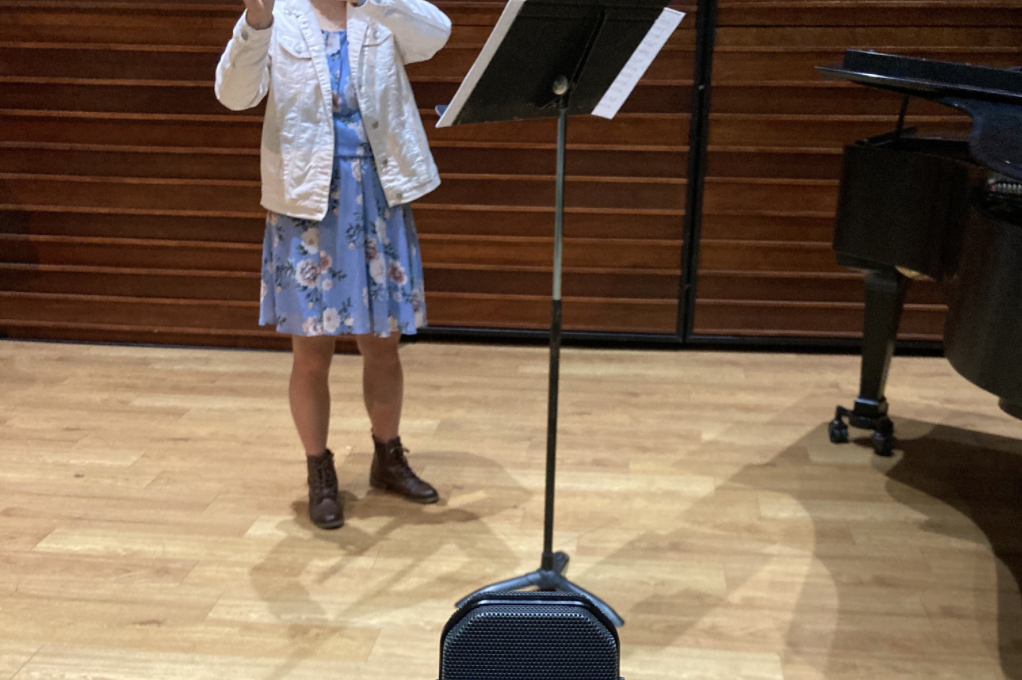I have a familiar feeling right now. It’s anticipation mixed with pride and stress and a hint of worry—a spicy mix! I have six students preparing to record programs for our state MTNA competition in the next week, and here at the culmination of all our work together toward this goal, there’s room for so much to go sideways! What if the pianist got the wrong date? What if one of the girls gets sick? What if the new Zoom thing I bought doesn’t actually make a better looking/sounding video than my iPhone? You’d think, after a year and a half of recording pretty much everything for pretty much every event, we’d be comfortable with it. In my case, I think it actually fills me with more trepidation the more we have to do it.
You see, these students are the top of the heap. They’d be the top of your heap, too, most likely. They are dedicated, hard working, artistic and kind, to me and to each other. Despite the word “competition,” it feels like they are, properly, in this for the best of reasons—to learn, to grow, to experience. If one of them wins, that’s just the icing on the cake. While I’m by no means an expert at producing great videos, here are a few of my tips. Feel free to laugh as you read them and wonder how we learned some of these lessons the wrong way!
- If you can hire someone to do the recording, do that! At one of the universities where I teach in a large pre-college division, there’s a group of undergrads who have formed a production company and put out a very professional looking product. And they don’t charge an arm and a leg for it. if you look around your city, you can probably find a group just like them.
- If you can’t hire someone to do the recording, get the best equipment you can afford to do it yourself. I think about it this way: when I was in graduate school, we had a seminar on resume preparation. The dean leading it said, “Everyone looks good on paper, so you have to, too.” The 21st century version of that statement is, almost certainly, “Everyone makes good videos, so you have to, too!” I get to hear these wonderful students every week, and I want their wonderfulness to be apparent to everyone who watches these videos.
- Talk to your students about how to dress. I skipped this step last spring and had someone make a competition video in a t-shirt and jeans. But then she won! So that conversation lost some of its teeth, honestly. I should have done it before—but I assumed she knew, and that was my mistake.
- Get the videos done as early as is comfortably possible, because the uploading could take a long time and have many intricate steps. For us, this event comes with a full page of instructions for how to make an unlisted YouTube video and submit the link to it—one video for each movement of each piece. It’s going to be an involved project!
- Prep the students to think of being ready to play through each piece twice and then move on. It almost certainly won’t happen that way, but get them thinking about mental focus and the need to perform as opposed to practicing the pieces. And even if everyone loves the first take, make another one anyway. After some time passes, you never know exactly what you’ll like better.
- When it’s over, celebrate. Breathe a sigh of relief, reassure where it may be needed, and then walk out the door together talking about new repertoire. Win or lose, getting ready for something like this and producing a video takes a lot of effort and attention, and you did it together. Go team!


[…] The Flute Examiner (Jessica Dunnavant): Lights, Camera, Flute, Action! […]
[…] The Flute Examiner (Jessica Dunnavant): Lights, Camera, Flute, Action! […]